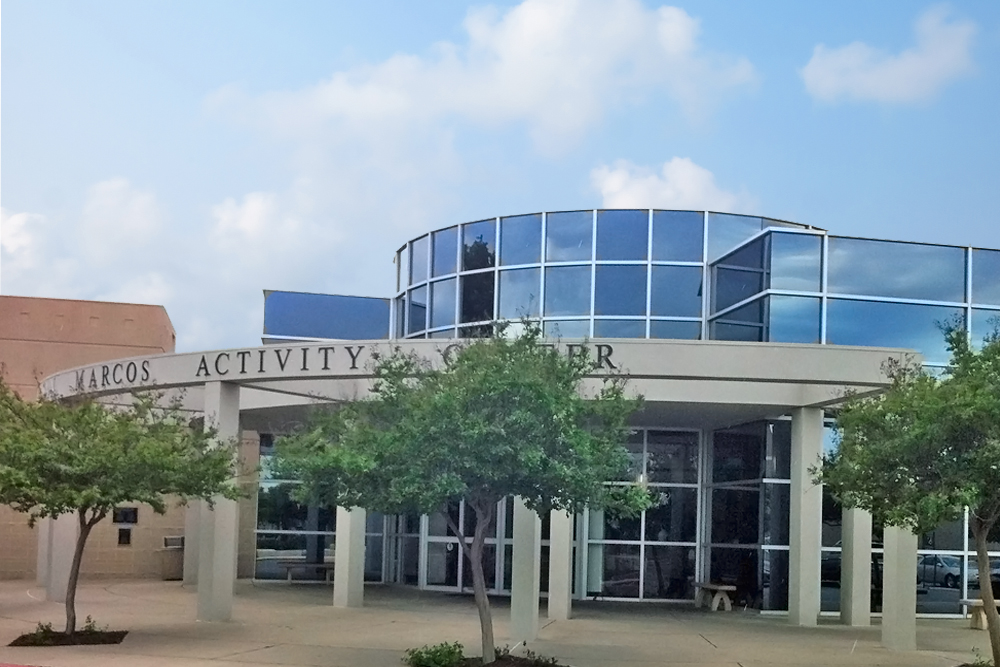Bridging The Gap Between San Marcos Police Department, People Of Color Through Communication, Empathy
By Terra Rivers | Managing Editor
Members of the San Marcos Police Officers Association (SMPOA) and local protest organizers engaged in the first of several planned meetings to discuss issues related to the police and people of color.
The event hosted retired pastor Paul Buntyn, Dr. Vincent Morton with Texas State University and protest organizers Malina Sutton, Gavin Graham, and Erika Konicki.
Fifteen San Marcos police officers, a representative from CLEAT (Combined Law Enforcement Associations of Texas), San Marcos Interim Police Chief Bob Klett, and San Marcos Public Safety Director Chase Stapp also participated in the event.
Rev. Buntyn served as moderator and speaker while Dr. Morton, Sutton, and Graham addressed officers.
As the moderator, Buntyn said he kept the focus centered on the injustice that is still continuing in the United States and the roles that the police are playing in it both unknowingly and knowingly.
“Naturally, there had to be some history talk and a better understanding of the role of police,” Buntyn said. “But at the same time not to give the police the idea that they aren’t needed.”
According to Buntyn, the goal of the meetings are to lead to a point where positive, substantial change can happen.
Communities and people of color around the country are protesting not only the murder of George Floyd at the hands of police but racial injustice, issues of police brutality and systemic racism that has plagued Black Americans for decades.
SMPD Corporal Laray Taylor said the San Marcos police department supports and protects the protesters’ rights to peacefully assemble and march.
“We’ve offered our assistance to a number of protest organizers,” Taylor said. “The protest events held in this community have been well organized and successful.”
Morton said he felt the recent conversations are a dialogue that needs to happen, and there were questions that needed to be asked and answered without fear.
“We can point blame, and rightfully so I think in some terms about what we’re looking at with police brutality,” Morton said. “But I think there is also an understanding, especially from a police officer’s viewpoint about Black culture, the Black community, and why the frustration is there.”
Graham, a member of the Texas State University Football team, worked with Texas State University Police Department, the San Marcos Police Department, several coaches, and fellow teammates to organize a unity march, which took place on June 10th.
“As a football program, we knew we needed to do something more than just release a statement,” Graham said. “The purpose was not to scream and yell, but to march together in solidarity,” Graham said.
Graham said while they continued to have a dialogue with San Marcos PD, they expect officers to hold each other accountable.
Morton said he has served on a number of boards and committees who hire police officers, and his concerns go beyond police brutality.
“My primary concern has always been how do we recruit and how do we train officers,” Morton said, “Because I’ve sat in on some interviews thinking I’m not hearing this human element enough. I need you to talk about the protection of people and individuals.”
While legislators and city officials across the country review and change laws, police officers continue doing their jobs, which means interacting with citizens.
Legislative changes are necessary, but more needs to be done. Legislation does not change perceptions, attitudes, or build relationships.
The SMPOA initiated this dialog between people of color and the police in order to listen, empathize, and learn from each other.
“It’s not always easy to hear the opposing points of view, but it’s necessary to begin the long healing process,” said Buntyn.
According to Buntyn, the biggest challenge is understanding; the meetings aim to bridge the gap in communication and allow both sides to come to fully understand the issues.
“I need to state that the cooperation of the SMPD is impeccable. They recognize that there is tenseness between police and citizens in this Nation,” Buntyn said. “The one major way to build a better relationship is to have uncensored dialogue and set the impetus to learn and hear. I wish to commend the leaders and officers of the SMPD for being transparent to allow the needed healing balm to take place. It could be a model for other police departments to follow suit. It would be a good exercise to revisit the pledge they make when they graduate from their respective Academies.”
Morton said he wanted officers to be able to ask him the questions that others might say are offensive to ask.
“I know one of those things that we’re going to get into is what about all the Black on Black crime?” Morton said. “We need to be able to talk about that; it gives insight into the Black culture and when you’re addressing and confronting some of these individuals why they feel the way they feel about police officers. It’s much deeper than that because you need to know how they feel about themselves.”
Graham said he couldn’t speak on behalf of everybody, but he thinks right now SMPD and, as of recently, has done a great job trying to diversify and be more involved in the community.
“The more I continue to sit down and speak with them; it continues to show me positive communication and hope that San Marcos PD will continue to work with us in an effort to make positive change,” Graham said.
This newly formed group of leaders from the community will be holding additional meetings to build a more solid foundation between local law enforcement and people of color.






